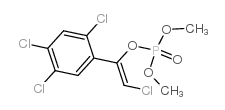Acaricide resistance in northern fowl mite (Ornithonyssus sylviarum) populations on caged layer operations in Southern California.
B A Mullens, R K Velten, N C Hinkle, D R Kuney, C E Szijj
Index: Poult. Sci. 83(3) , 365-74, (2004)
Full Text: HTML
Abstract
Southern California caged layer operations were visited over 3 yr. Northern fowl mites from 26 field populations were tested for acaricide resistance using a capillary pipette and glass dish bioassay. One was a susceptible field population with no pesticide exposure for over 30 yr (reference site for resistance ratio calculation). Technical and commercial formulations of malathion, carbaryl (Sevin), permethrin, and a commercial formulation of tetrachlorvinphos/dichlorvos (Ravap) were tested. Malathion did not have high activity for mites relative to other materials, but resistance to both technical and commercial formulations was low (< 5x). Resistance to other materials was moderate to extreme. Frequency of carbaryl resistance (> 10x) was higher with the commercial (88%) than the technical material (41%); 19% of the populations had resistance > 100x to commercial carbaryl. Frequency of Ravap resistance (> 10x) was 68%; 8% of populations had resistance > 100x. Frequency of permethrin resistance (> 10x) was 72% for the technical material and 88% for the commercial formulation. Extreme permethrin resistance (> 1,000x) was observed in 56 and 50% of mite populations assayed using the technical and commercial formulations, respectively. Among sites, resistance to permethrin was uncorrelated with resistance to other chemicals, suggesting a different resistance mechanism. Resistance to carbaryl and Ravap was highly correlated [r = 0.76 at the LC50 level (concentrations estimated to be lethal to 50% of the test population) and r = 0.99 at the LC95 level], suggesting a common resistance mechanism. Producers currently depend completely on pesticides to control mite infestations. Mite resistance to registered materials emphasizes the need for integrated control measures.
Related Compounds
| Structure | Name/CAS No. | Molecular Formula | Articles |
|---|---|---|---|
 |
Tetrachlorvinphos
CAS:22248-79-9 |
C10H9Cl4O4P |
|
Susceptibility of Adult Cat Fleas (Siphonaptera: Pulicidae) ...
2015-08-01 [Parasitol. Res. 114 Suppl 1 , S7-18, (2015)] |
|
Economic effects of horn fly (Diptera: Muscidae) populations...
1991-08-01 [J. Econ. Entomol. 84(4) , 1270-4, (1991)] |
|
Controlled release insecticide devices for protection of she...
1994-03-01 [Vet. Parasitol. 52(1-2) , 113-28, (1994)] |
|
Assessing intermittent pesticide exposure from flea control ...
2008-11-01 [J. Expo. Sci. Environ. Epidemiol. 18(6) , 564-70, (2008)] |
|
Study of the mechanism of Flavobacterium sp. for hydrolyzing...
2003-12-01 [Fundam. Clin. Pharmacol. 17(6) , 717-23, (2003)] |